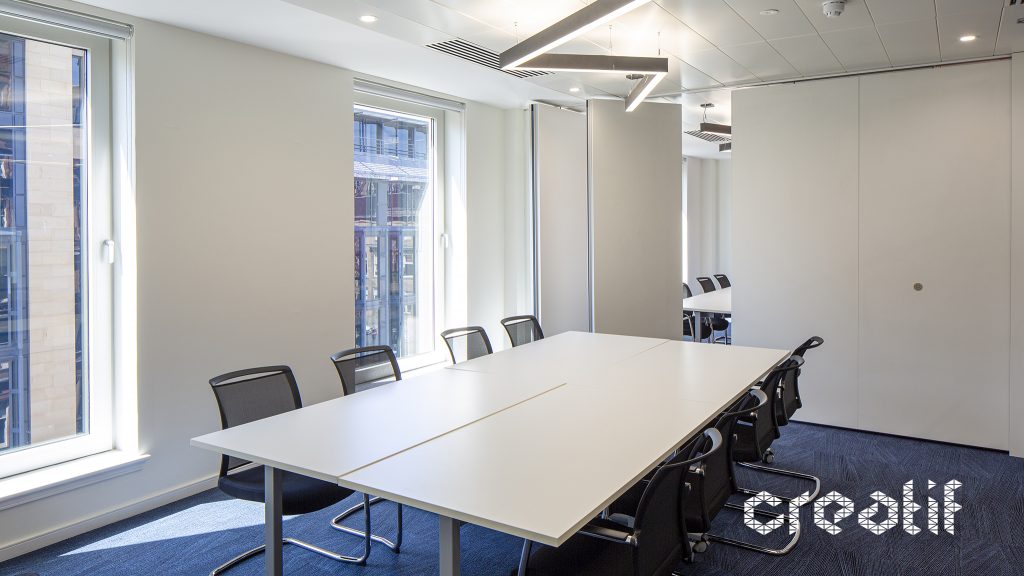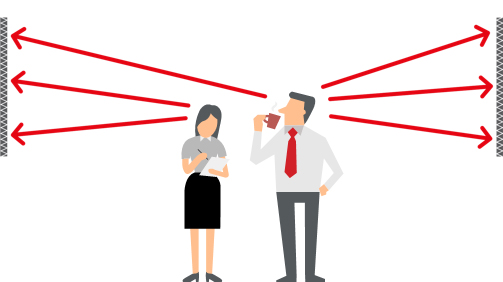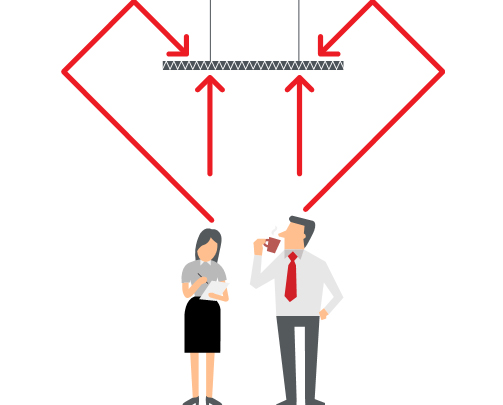In the third part in a series of posts about the ABC of Acoustic Design, we take a look at the principle of absorbing sound in the workplace, the history behind the concept and why it is an effective acoustic remedy.
One of the earliest examples of acoustic design being put into practice was conducted by the American physicist – and the father of architectural acoustics – Wallace Clement Sabine.
The Harvard University graduate was given the job of improving the Fogg Lecture Hall, a task considered so Herculean it was almost impossible, and why Sabine, then a junior physics professor, was handed the responsibility.
It took years for Sabine to make a breakthrough and turn the cacophonous lecture hall into an acoustically acceptable space for learning- but he did it.
Night after the night, he, with the help of his assistants, tested different materials out for their ability to reduce reverberation. He even conducted experiments with people and determined that one human was absorbed as much sound as six standard seat cushions.
From this, he was able to roughly work out how much material needed to be added to a room to bring reverberation under control. After years of work, he finally made the Fogg Lecture Hall an echo-free building.
By achieving the impossible, he cemented himself as the pioneer of acoustic design and his principles were quickly adopted the world over.
Today, much of what we do is based on Sabine’s philosophy of using materials to soak up, or absorb sound. Many of our acoustic solutions are traditional panels that can be used in several ways – as rafts, baffles or as standard ceiling or wall coverings.
And they can be easily implemented into any design.

A really simple way to improve the acoustic comfort of any space is to cover 25% of the available wall and ceiling space with Class A absorbent material. Yes, it can be that easy – in theory. But as always, the devil will always in the detail.
How you cover the space – and where you decide to place the panels – can make an even bigger difference, and help you deliver a workspace of greater quality to your clients.
A smart rule of thumb would be to plan where sound would originate from and design around it.
For example, think of a video conferencing room. Behind the TV and speaker system will, generally, be a hard, reflective surface known as a wall, which will just ping sound waves around the room and turn that important conference call into an inaudible mess. By simply fitting absorptive panels behind the TV screen, you’ll soak up sound at source and improve audio clarity within the room.
Similarly, take a large meeting room. You could follow the same principle and line the walls with an acoustic material, or you could look upwards and design a series of acoustic panels into the ceiling and make a real feature of it.

The same principle works across all different kinds of spaces, be it a breakout room, reception area, canteen or open-plan office. Map out where the source of sound will be, and work from there.
However, it’s important that different types of panels act in slightly different ways when absorbing sound. While it may sound slightly counter initiative, some Class A panelling can perform better than other Class A panelling.
And it’s all down to surface area.
In the same way that you maximise the surface area of your clothes when hanging them out to dry, you should do the same for acoustic panels where possible. The more surface area that’s on show and capable of absorbing sound, the better the results will be.
Let’s use ReSound as an example.
Wall- and ceiling-mounted panels will soak up 95% of sound waves that hit them. Which is all great and good, especially when fitted around TV screens, monitors and at natural height.

Rafts, on the other hand, have all four surfaces on show and, therefore, catch sound travelling at all directions – including sound waves ricocheting off the ceiling. Effectively, a raft has 50% more surface area available to absorb sound than a wall-mounted panel does.

Baffles, though, are by far the most efficient. A series of baffles placed above a noisy area will trap sound within the air gap between them, capturing 95% of the sound wave’s energy at every impact point, creating an acoustically perfect zone.

Of course, each arrangement has its own place. If you need to stop sound bouncing off a wall, use a wall-mounted panel (and why not make a feature of it?). Similarly, if you need an acoustic arrangement to help reduce noise transfer and reverberation in a large open plan space, then rafts or baffles should be your go-to design of choice.
Best of all, the same principles can be applied when retrospectively adding acoustic products to an existing space. By following the basic principles outlined in this piece, you can make a substantive and substantial difference to the acoustics of a room. It couldn’t be simpler.